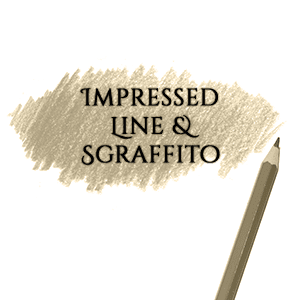Colored Pencil Tips & Techniques:
Papers for Colored Pencil
It's All About Colored Pencils!
As a colored pencil artist, I have explored and experimented with many different types of paper. Not just any type of paper can hold up to many layers of colored pencil. In addition, some types of drawing papers do not hold up very well to solvents or colorless blenders. There are many types of drawing papers on the market, with different surfaces. Below is a list of the types of drawing papers I have used over the years. As you will see, there are many types of drawing surfaces. Some work well with colored pencils, and others do not so well. However, my advice is to explore and experiment until you discover that perfect paper that meets your needs and requirements. I recommend that you get an acid-free or archival paper or one that has been treated with neutralized acids to help slow down the yellowing and deterioration of the paper. To read more about acid-free paper visit Wikipedia
Drawing Papers
Rising Stonehenge - comes in black, white, warm white, tan, gray and cream colors. It is my favorite paper to work on as it is very durable and can handle lots of layers of color. The colorless blender pencils and colorless blender markers work well on this type of paper. It is 100% cotton and every sheet is acid-free and buffered with calcium carbonate to help.
Canson Mi Tientes - comes in a variety of lightfast colors. You want to use the smooth side of this paper or your pencil leads will get eaten up quickly. Canson doesn't take as many layers as Stonehenge, but the variety of colors allows one to create unique pieces with striking effects. The colorless blender pencils work best on this paper, but Colorless Blender Markers work well on it too. Canson Mi-Teintes papers are made from medium weight 100% pure rag. Canson Mi-Teintes papers are available in various size pads and sheets.
Strathmore Bristol Smooth 400 series - has a smooth surface, can use blenders and a fair amount of layers of color. It is Acid-free. The toothy texture of the regular (vellum) surface works well with pencil, charcoal and pastel. The smooth surface is ideal for detailed ink work and is great for color pencil and marker.
Strathmore 300 Series Charcoal Paper, Strathmore 400 Series Charcoal Paper, and Strathmore 500 Series Charcoal Paper - comes in a variety of colors. Can use the smooth or textured side, depending on the technique or style you are wanting to achieve. The blender pencils and blender markers work well on this paper. Strathmore charcoal paper is a very durable, acid-free, 100% cotton fiber paper that is great for colored pencil.
Strathmore 400 Series Drawing Paper - The colorless blender pencils and colorless blender markers work well on this paper. Strathmore drawing paper is acid-free, 100% cotton paper and works well with colored pencil.
Rising Drawing Bristol Plate - has smooth surface, great with blenders and allows fair amount of layers of color.
Paper Surfaces
Hot Press (Plate or Smooth) - smooth surface with very little tooth.
Cold Press (Vellum or Regular) - rough or textured surface. This type of paper tends to eat up pencils quickly.










